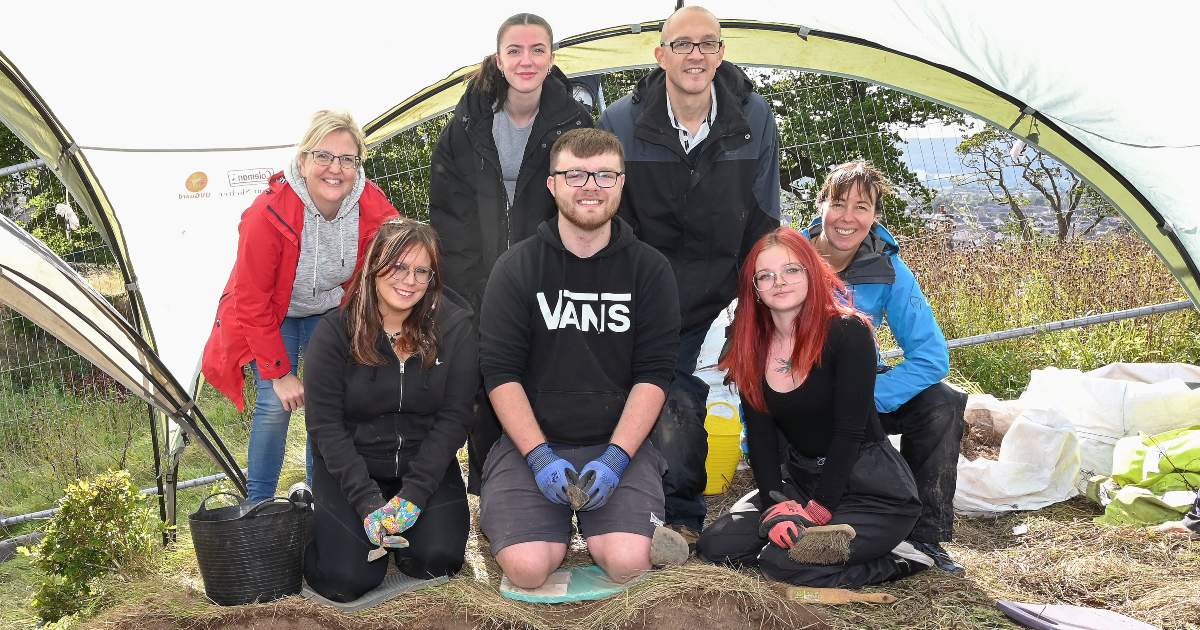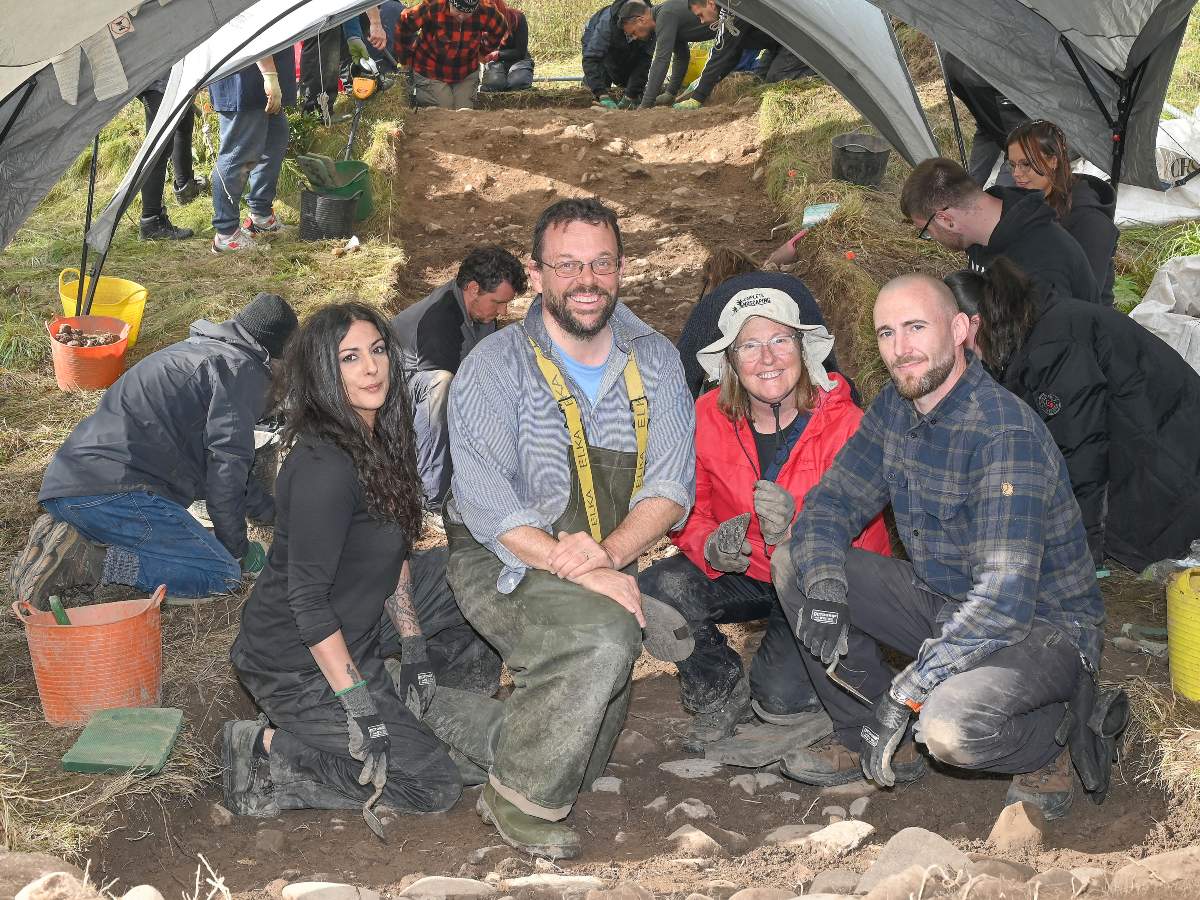University spot could be linked to William Wallace
An archaeological dig has uncovered a section of road believed to have been used by Wallace and his army.
/filters:format(webp)/filters:no_upscale()/prod01/cdn/media/stirling/news/news-centre/2025/sep-25/1200X630-banner-image-murray-cook-dig.jpg)
An archaeological dig has uncovered a section of road on the University estate believed to have been used by Sir William Wallace and his army.
Archaeologist Dr Murray Cook, who led the dig, said the road dates back to the 12th century and would have also been used by the likes of Robert the Bruce, Edward I, Oliver Cromwell and the Jacobites.
The site, on the side of Spittal Hill off Airthrey Road, is part of Airthrey Estate, owned by the University of Stirling.
The four-day dig last week, timed to coincide with the anniversary of the Battle of Stirling Bridge on September 11, 1297, attracted a crew of more than 20 volunteers, including University of Stirling students and staff.
They also found evidence of a late 17th century/early 18th century road, uncovering cobbles and glass they say date back to that time.
 University of Stirling staff and students (L-R): Katie Illingworth, Rebecca Cochrane-Connelly, Sophie Leonard, Calum Bryan, Dr Joe Smith, Amy White, Dr Ashley Fenwick.
University of Stirling staff and students (L-R): Katie Illingworth, Rebecca Cochrane-Connelly, Sophie Leonard, Calum Bryan, Dr Joe Smith, Amy White, Dr Ashley Fenwick.
Dr Cook, of Rampart Scotland, said: "It looks like, rather than resurface the old 12th century road, they dug a brand new one on the same spot. We found the older surface sealed under a bank. It's exciting to think it was likely used by William Wallace and fellow Scots rebel Andrew de Moray."
Dr Joe Smith, Senior Lecturer in History Education, said: “Scotland is undertaking a major curriculum improvement cycle which encourages teachers to think differently about their practice. By introducing new history teachers to methodologies such as archaeology, we hope to broaden teachers’ and young people's ideas about what history is and where we can learn about it. Dr Cook’s dig was a great opportunity to do that.”
Also joining the volunteers were Lewis Goodwin and Nikki Black, who had heard of the dig through the YouTube channel Scotland History Tours.
Lewis said: “It’s our first archaeological dig and it’s been hard graft but quite therapeutic. We’ve really enjoyed the community and are excited about the historic implications of the dig.”
Dr Cook is due to release photos and more details of the dig in the coming weeks.
 Dr Cook (centre) with (L-R) volunteers Nikki Black, Nanci Munroe and Lewis Goodwin.
Dr Cook (centre) with (L-R) volunteers Nikki Black, Nanci Munroe and Lewis Goodwin.
